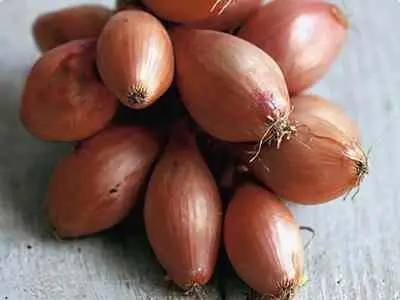The shallot ( Allium ascolonicum ) is a Liliaceous vegetable, like garlic and onions, of a cultivation similar to the latter. From a single bulb (or rather, a tooth) and for a short period it produces a bunch of small bulbs of equal size. Its culinary uses are similar to those of onion, but with a stronger flavor. In spring, its tender stems have the same qualities as chives. It needs fertile soil and should not be watered after planting. The mold of the roots is its biggest problem, hence the risks have to be scarce. It has two main varieties: spring and autumn. We explain how to grow shallots.
How to sow shallots
In temperate zones, you can start planting this vegetable from mid-winter and during spring to enjoy an early harvest. Second sowing can also be done in the fall.
The bulbs are buried in lines about 20-25 centimeters apart. Between each bulb, it is necessary to leave about 10 centimeters of distance. They also grow well when lines are crowded into small hills. This method is a good option on heavy soils. They are planted shallowly, so that one third of the shallot protrudes above the ground.
Weather
Shallots are adapted to any climate, as they are quite resistant to both cold and intense heat. But what does not take anything well is humidity, and that is why it grows better in dry areas. In addition, to obtain larger specimens, shallots prefer days with a long photoperiod (many hours of light). Therefore, it is easier to grow in hot, southern climates.
I usually
Although they adapt to many conditions, shallots need well-drained soil, which prevents water stagnation. They grow best in somewhat heavy, fertile, moderately manure-fertilized soils, well-aerated and neutral or slightly alkaline. Likewise, they need to be in an open space and with more distance between the lines than garlic and onions, because around the “mother bulb” a nest or bunch of medium-sized shallots is formed.

Harvest
Shallots are harvested as soon as the stems are bent, starting in July if they have been planted in spring. They are collected and left to dry with the leaves on the ground and in the sun for two or three days. They are then hung in a cool, dry room. They last longer than onions. They do not germinate at the end of winter, unlike these, and can continue to be used the year after the time of harvest. A 3-meter long row will produce about 3.5 kilograms of shallots. The harvest is carried out in the same way as with onions: it has to be removed from the ground with the help of a fork or by hand.
